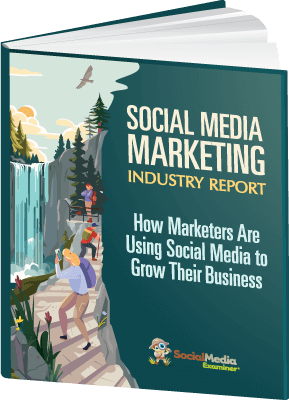 Do you wear many hats at your place of business?
Do you wear many hats at your place of business?
Do some of them have to do with reaching out to and interacting with your social media fans and blog readers?
If so, then you're officially or unofficially performing the role of an online community manager.
If you're doing it right, then it's probably one of the most enjoyable jobs ever. You get to network with interesting people, make new friends, offer guidance, answer questions and so on.
But it's not all sunshine and roses. At times you're required to set and enforce the rules, issue warnings, deal with negative people and even ban members (when things get out of hand!).
In her book, Online Community Management for Dummies, Deb Ng shares her own extensive experience on how the different roles of a community manager work—especially as a customer advocate and brand loyalist.
Here's what you need to know about the book.
Author's Purpose

Deb Ng wrote this book to help you guide, monitor, respond to and assess the activities of your online community in order to benefit and build loyalty for your brand.
Your online community consists of the people who like your brand on Facebook, follow you on Twitter and comment on your business blog.
The author's goal is to help you give them a good customer experience by providing a great community experience.
What to Expect

In this 314-page reference book, you can expect to find useful tips for fostering and interacting with your online community, as well as learn what they're looking for in a brand.
Specifically, you will discover:
- How to create your own productive online community
- How to communicate with members of your online community
- The perks of joining an online community
- Negative things that affect online communities
- How to evaluate the success of your online campaigns
- And much more!
Highlights
Since this is a reference book, you may find some sections of the book to be more interesting or useful than others. The highlights for me were:
Get World-Class Marketing Training — All Year Long!
Are you facing doubt, uncertainty, or overwhelm? The Social Media Marketing Society can help.
Each month, you’ll receive training from trusted marketing experts, covering everything from AI to organic social marketing. When you join, you’ll also get immediate access to:
- A library of 100+ marketing trainings
- A community of like-minded marketers
- Monthly online community meetups
- Relevant news and trends updates
#1: Wearing the Many Hats of a Community Manager (Chapter 3)
Some people think community managers simply post Facebook and Twitter updates. But a community manager's role actually involves many different things. Take a look at some hats community managers wear:
- Leader – The best community managers are not only able to handle community discussion, but also assist community members by offering guidance, answering questions, asking for feedback and reaching out to new members.
- Content developer – Community managers are keepers of the content (everything that is posted online) because they choose the forms of content to post on company blogs and social networks, and they also write and edit the content.
- Moderator – Moderating comments is the most talked-about aspect of a community manager's job. But moderation is not just issuing smackdowns to naysayers or deleting comments. It's also to make sure that content flows in a positive and productive manner, even if some folks don't agree.
- Community advocate – Community managers also look out for their people. Acting in the best interest of their members ensures loyalty to the brand. They handle complaints, pass on concerns, facilitate good conversation and fight for the needs of the community.
- Mediator – Community managers also spend a lot of time fielding customer issues. Since they're the most visible person in the organization, people naturally reach out to them when they need something. Community managers have to handle the situation and see it through until it is resolved.
- Analyst – In order to know whether all programs and outreach efforts are working, community managers are expected to report the outcome of their community outreach to their superiors. They use analytical tools to evaluate the success of the online community.
#2: Handling Criticism and Negativity About Your Brand (Chapter 7)
One of the least-enjoyable parts of being a community manager is reading negative comments or blog posts about your brand. There will always be people who do not like your brand, and so at times you will have to deal with negativity. Here's how to do that:
- Determine whether negative comments have any merit – be sure to read everything about the situation and then decide if the comments are valid. Be honest.
- Determine whether a response is required – don't react when there's no need to react. Discuss the situation with your team and figure out whether the situation will die down on its own.
- Respond if necessary – If you have to respond, don't fire back in anger – be fair, don't go tit for tat and above all, be very transparent.
Understand that sometimes people criticize because they care. They want something to work and are disappointed that it didn't. As a community manager, know the difference between negativity from people who want to see your community succeed, and those who only want to cause drama.

Discover Proven Marketing Strategies and Tips
Want to go even deeper with your marketing? Check out the Social Media Marketing Podcast! Publishing weekly since 2012, the Social Media Marketing Podcast helps you navigate the constantly changing marketing jungle, with expert interviews from marketing pros.
But don’t let the name fool you. This show is about a lot more than just social media marketing. With over 600 episodes and millions of downloads each year, this show has been a trusted source for marketers for well over a decade.
#3: Creating a Welcome Plan for New Members (Chapter 9)
A new member's first impression of you and your community is extremely important for your brand. If the atmosphere is friendly and helpful, there's a good chance that the new member will come back.
Having a plan to welcome new community members is therefore essential for your community's growth. Here are some best practices to follow:
- Notice new members, say hello and welcome them
- Make sure your brand's information is up to date
- Check guidelines and policies often
- Offer a place for new members to check in
- Send email welcome messages
- Make sure content is appealing to all
- Make introductions
Remember too that being a welcoming community manager means encouraging all members, including newbies and lurkers, to start conversations and participate in existing discussions. It is your job to see that all participants have everything they need to become positive, productive members.
#4: Interacting With Members Through Social Networks (Chapter 10)
Your community members aren't hanging out in one consolidated spot. They're scattered all over the web. They're not necessarily looking to interact with you, so you have to seek them out rather than the other way around.

Here are some tips for interacting online with potential community members:
- Don't be aggressive – Chatting with people who might be a good fit for your community is fun, but making every interaction a push to join the community means you'll lose friends and members.
- Ask questions – You'll get more response from people if you ask questions. Questions don't have to be about the brand. You can ask for tips, crossword puzzle answers and book recommendations. Every response is a discussion waiting to happen.
- Share – Sharing is what social networking is all about. Sharing discussion-worthy news items will help engage more serious types and show that your community isn't all fluff.
- Drop links sparingly – There's a fine line between sharing and spamming, and if you're not careful you can cross that line and drive people away. Sharing occasional bits of fun or news is fine, but making every comment or update a link back to your stuff is spam. Don't do it. You'll get a bad reputation and so will your brand.
- Retweet – Retweeting is valuable. It allows you to support a member who shared something awesome, and it may set off a wonderful chain of retweets, raising awareness for the original commenter.
- Know when the discussion is private – Having a dialog with another member or social-networking friend is the point of the whole thing, but sometimes other people get tired of reading your conversation. If a discussion gets too long or too personal, take it private.
#5: Paying Attention to the Numbers (Chapter 13)
When you use a tool such as Google Analytics, you can find out about your community members' habits and tailor campaigns and promotions to their needs.

Your stats also offer a wealth of information about the traffic patterns in your communities:
- How many people visit your community each day
- How much time the average person spends visiting your community
- What your most popular content and discussion topics are
- Where your visitors are coming from before they land on your site
- Who is linking to you from other blogs and websites
- Which days and months yield the highest and lowest traffic
- What search terms (potential) members are using to land on your pages
The purpose of your social networking campaign is to drive your community to take a particular action, whether that action is blog traffic, sales or a charitable campaign. Your analytics program will help you measure the success of your social campaigns.
Personal Impression
No doubt there's plenty of confusion regarding what an online community manager does. Even worse, there are many online communities that have failed to grow due to poor management.
Deb Ng, founder and former owner of Freelance Writing Jobs, delivers expert advice on how to attract people to online communities while promoting loyalty to the brand.
Apart from the fact that Dummies books tend to be a little wordy and therefore take too long to explain something that could be said more concisely, there are several reasons why I highly recommend this book:
- Very useful, practical and friendly tips that will help you build your online brand while serving the community that rallies around it.
- Whether you're new to blogging and social media or have been at it for a while, you will learn many lessons that will add tremendous value to your community.
- The book is based on Deb's own real-life experience as one of the most admired and successful online community managers in the business. Her advice is rock-solid and you will benefit directly from her knowledge and accomplishments.
- Deb has totally nailed this subject. You will not have to read any other book about online community management. It is a complete resource for everything that you ever need to know about managing your blog or social media community.
Social Media Examiner gives this book a 4-star rating.
Over to You
What do you think? How have some of the tips in this review enlightened your perception of online community management? Leave your questions and comments in the box below.
Images from iStockPhoto.
Attention Agency Owners, Brand Marketers, and Consultants

Introducing the Marketing Agency Show–our newest podcast designed to explore the struggles of agency marketers.
Join show host and agency owner, Brooke Sellas, as she interviews agency marketers and digs deep into their biggest challenges. Explore topics like navigating rough economic times, leveraging AI, service diversification, client acquisition, and much more.
Just pull up your favorite podcast app, search for Marketing Agency Show and start listening. Or click the button below for more information.

